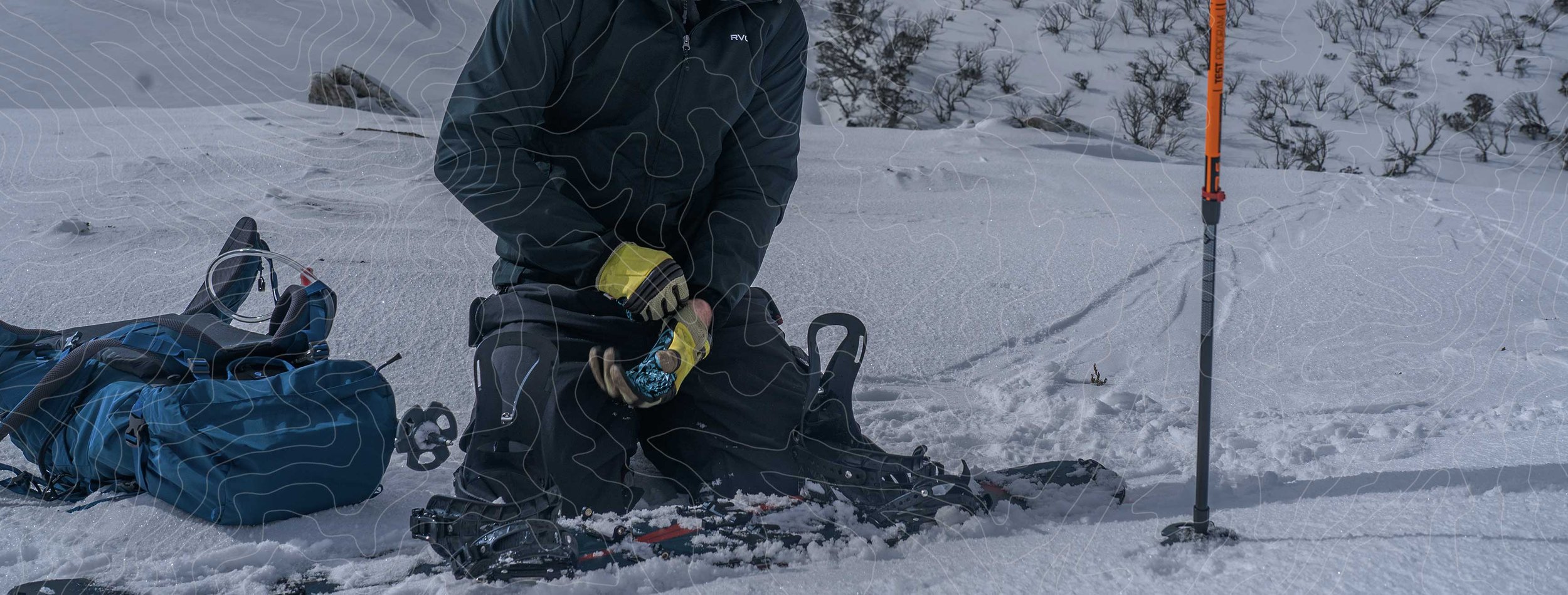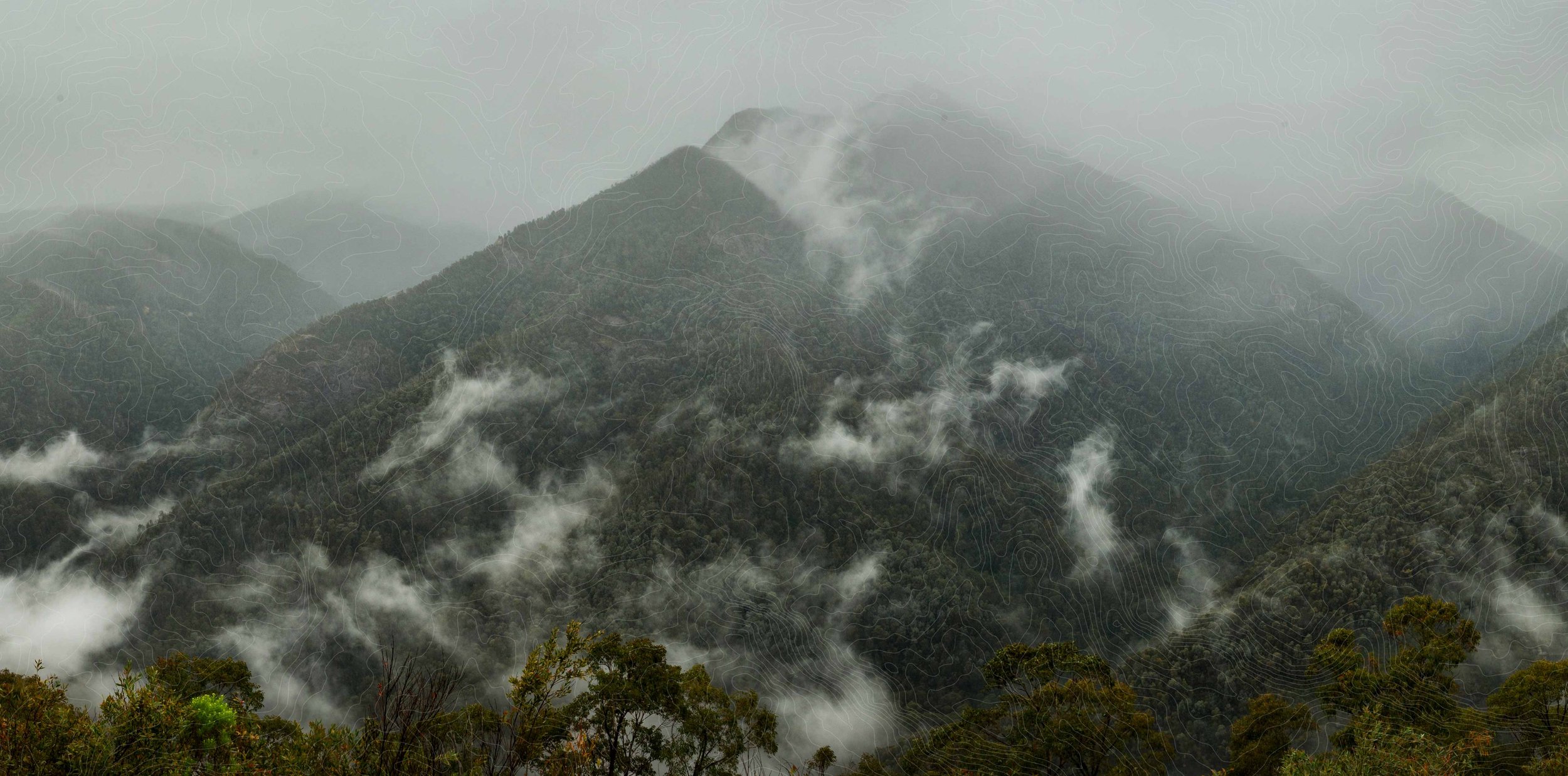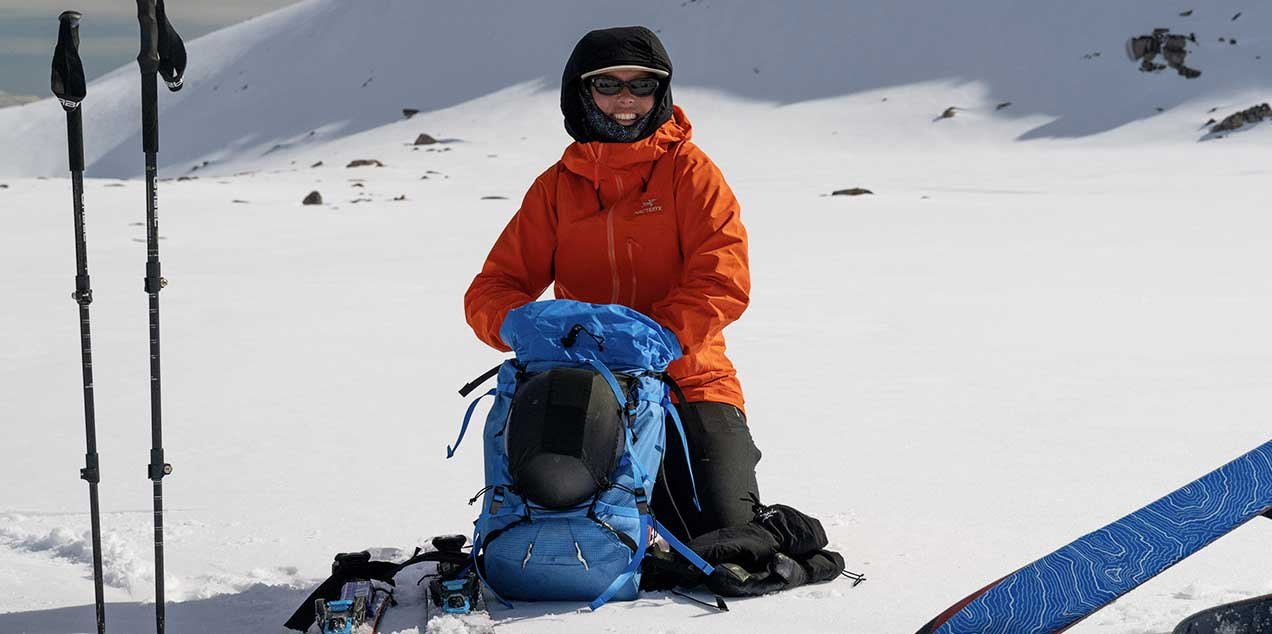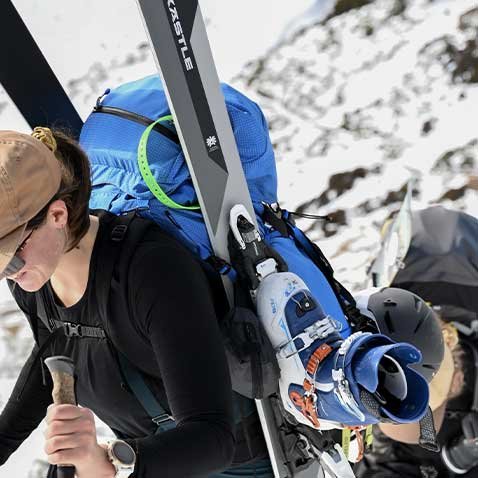
Backcountry Gear

In the backcountry, having the right gear is absolutely crucial for your safety and enjoyment. Proper equipment can mean the difference between a successful adventure and a potentially dangerous situation. Whether it's navigational tools, appropriate clothing, or emergency supplies, being prepared ensures you're ready for the challenges the wilderness can present, allowing you to fully appreciate the beauty and tranquility of the backcountry with peace of mind.
Packing: What & How
Make sure you have the essentials in your backpack, extra layers for changing weather conditions, high-energy snacks, and a thermos with a warm drink plus plenty of water. If you are not going with a guide you will need navigation tools like a map and GPS, avalanche safety gear such as a beacon, probe, and shovel, and you need to fill out a trip intention form.
PREPARE FOR ALL CONDITIONS
Preparing for all conditions on a backcountry tour is essential for safety and comfort. Layer your clothing to adapt to changing weather; bring waterproof gear, extra layers, and warm accessories like gloves and hats. Being well-prepared ensures you can handle what Mother Nature throws you.
BACKPACKS
Having a good backpack with straps on the outside is crucial for your backcountry adventure. It allows you to securely attach essential gear like skis, snowshoes, or climbing equipment. A well-designed backpack also ensures even weight distribution, reducing strain during long treks.
LAYERS
Layering is crucial when exploring the Australian backcountry. Start your adventure with fewer layers to prevent overheating during climbs. As you ascend and the wind chill factor comes into play, having a good shell is important. Layering ensures you can easily adjust to varying conditions, staying comfortable.
WATER & SNACKS
When venturing into the backcountry, pack snacks like trail mix, energy bars, and dried fruits to keep your energy levels up. For a half-day tour, aim for at least 1.5 liter of water per person, and for a full-day adventure, look into a camelpak of 3 liters to stay well-hydrated in varying mountain conditions.

Ready to head out on a backcountry adventure?
Baselayers, Mid-Layers & Outerlayers
The most convenient way to gear up for a Snowy Mountains ski holiday is by renting equipment near the resorts.
You should also plan ahead by booking gear online and researching what you may need for the adventures you’re planning. Gear can be a hassle so we have created a list of our favourite rental businesses for Winter Equipment.
OUTERWEAR
Outerwear is your shield against the wild winds when exploring the Australian backcountry. Lightweight shells are a must, offering protection from rain, wind, and snow without weighing you down during your adventures. These outer layers keep you dry and comfortable, ensuring you can focus on the scenery.
ACCESSORIES
You will need a beanie or cap to keep your head warm and protect you from the harsh sun, along with a good pair of sunglasses or goggles to shield your eyes from the elements. Additionally, glove liners and gloves are essential for keeping your hands warm. Don’t forget a helmet for your way back down the mountain.
BASELAYERS
Baselayers are essential for comfort and warmth when hitting the slopes. Merino wool baselayers provide natural warmth and moisture-wicking properties, ideal for regulating body temperature. Synthetic thermals, on the other hand, excel in moisture management during intense activities.
MID-LAYERS
Midlayers are versatile companions on backcountry adventures in Australia. Opt for lightweight fleece or puffer vests and jackets to provide essential insulation without adding bulk to your backpack. These midlayers trap heat close to your body, keeping you warm when temperatures drop.

Check out the Arc’teryx Guide to Layering
Ski Touring & Splitboarding Setups
Summer definitely comes with less gear to get out into the hills! We've compiled a list of our preferred rental businesses that specialise in summer gear, including bikes, kayaks, fishing equipment, and more, to ensure you have everything you need for your alpine adventures.
SPLITBOARDING
A splitboarding setup is designed for snowboarders who want to explore the backcountry. It typically includes a splitboard, which is a snowboard that can be split into two separate skis for climbing uphill, specialized bindings that allow for both uphill and downhill modes, and climbing skins that attach to the splitboard.
ACCESSORIES
Adjustable ski poles are essential for touring. You will also need to assess whether your boots are comfortable enough to hike the distance. When heading down steep slopes consider using crampons, whippets, and ice axes. To ensure you can climb back out of steep icy terrain. Your guide can assist you with what to pack.
SKINS
Climbing skins are specialized strips of material, typically made of nylon or mohair, attached to the bottom of skis or splitboards to provide grip when ascending slopes. They have a directional texture that allows them to glide in one direction (uphill) while gripping in the other, enabling users to ascend steep snowy terrain.
SKI TOURING
A ski touring setup consists of skis with touring bindings that allow for free heel movement during ascents and lockdown for descents, climbing skins, and adjustable poles. Additionally, ski tourers often wear alpine touring boots, which offer a combination of downhill skiing performance and walking comfort.

K7 Adventures provides professionally guided wilderness trips in The Snowy Mountains.
Book your next adventure with us today for an unforgettable experience.















